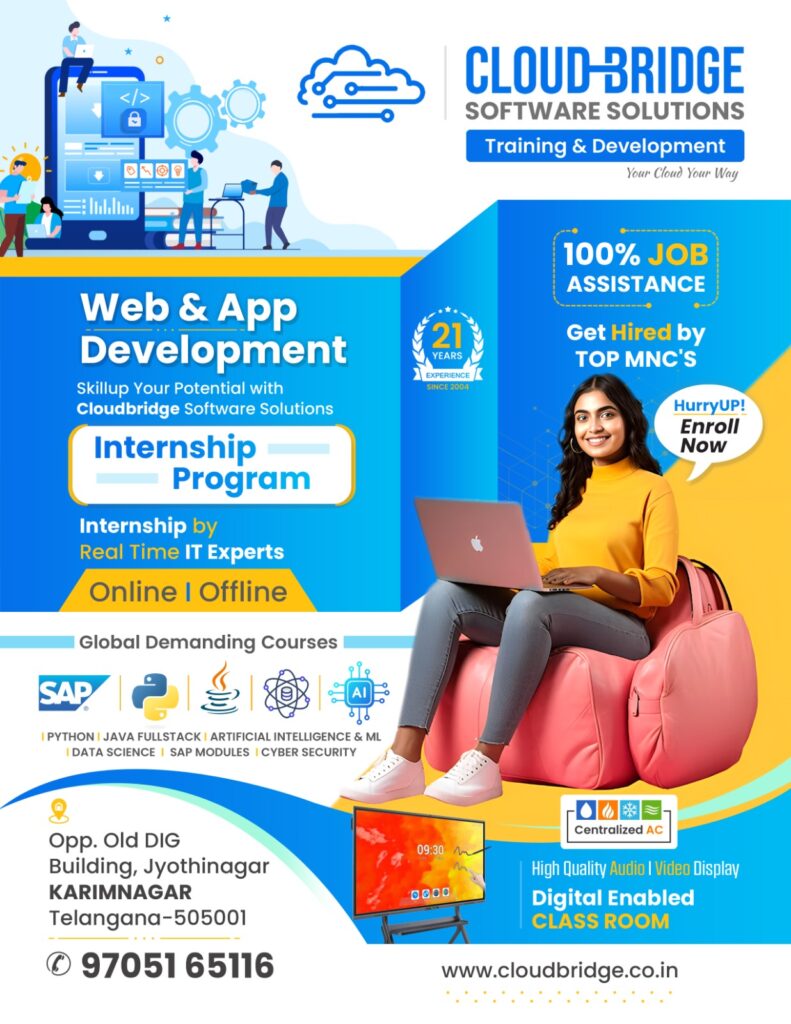Ready to elevate your Skills, Join us
Take the next step towards achieving your business goals. Partner with us to leverage innovative solutions and expert guidance tailored to your needs. Don’t wait—unlock your potential today!
Internship Certification Program
Python
Content Ideas:
Introduction to Python programming.
Python libraries for Data Science (NumPy, Pandas, Matplotlib)
Web development with Django/Flask.
Automation scripts using Python.
Machine Learning with Python (Scikit-learn, TensorFlow).
Image Suggestions:
Code snippets with Python syntax.
Graphs/charts created using Matplotlib or Seaborn.
Flowcharts showing Python’s use in automation or web development.
Logos of popular Python libraries.
Java Full Stack Development
Content Ideas:
Basics of Java programming.
Building REST APIs with Spring Boot.
Front-end development with Angular/React.
Database integration (MySQL, MongoDB).
Deployment of full-stack applications.
Image Suggestions:
Architecture diagrams of full-stack applications.
Screenshots of Java code and frameworks.
UI/UX designs for front-end development.
Logos of Java, Spring Boot, Angular, React, etc.
Cyber Security
Content Ideas:
Importance of Cyber Security in modern applications.
Common cyber threats (phishing, malware, DDoS attacks).
Tools for Cyber Security (Wireshark, Nmap, Metasploit).
Best practices for securing web applications.
Ethical hacking and penetration testing.
Image Suggestions:
Infographics on cyber threats and prevention.
Screenshots of security tools in action.
Diagrams of secure network architectures.
Logos of Cyber Security tools and certifications (e.g., CISSP, CEH)
Data Science
Content Ideas:
Introduction to Data Science and its applications.
Data preprocessing and cleaning.
Exploratory Data Analysis (EDA).
Machine Learning algorithms (regression, classification, clustering).
Data visualization techniques.
Image Suggestions:
Graphs and charts from EDA (e.g., heatmaps, scatter plots).
Flowcharts of the Data Science pipeline.
Screenshots of Jupyter Notebooks with code.
Logos of Data Science tools (e.g., Pandas, Tableau, Power BI).
Artificial Intelligence
Content Ideas:
Introduction to AI and its subfields (ML, NLP, Computer Vision).
Building AI models with TensorFlow/PyTorch.
Real-world applications of AI (chatbots, recommendation systems).
Ethical considerations in AI development.
Future trends in AI (Generative AI, GPT models).
Image Suggestions:
Neural network diagrams.
Screenshots of AI models in action (e.g., chatbots, image recognition).
Infographics on AI applications in various industries.
Logos of AI frameworks (e.g., TensorFlow, PyTorch, OpenAI).





